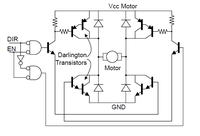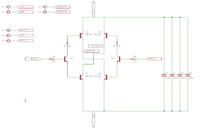psurya1994
Member level 5
Can we interface motors which arduino UNO, without using a motor driver IC(L293D)?
The motor should be able to rotate in the the directions.
The motor should be able to rotate in the the directions.
Follow along with the video below to see how to install our site as a web app on your home screen.
Note: This feature may not be available in some browsers.
Can we interface motors which arduino UNO, without using a motor driver IC(L293D)?
The motor should be able to rotate in the the directions.

